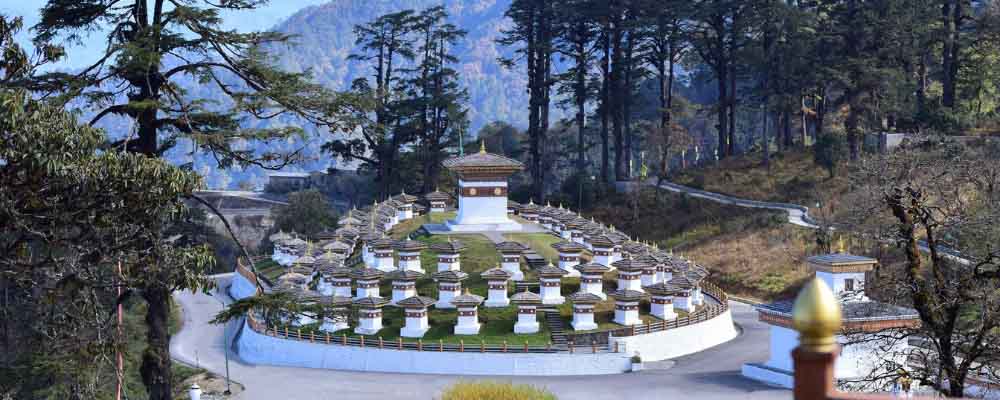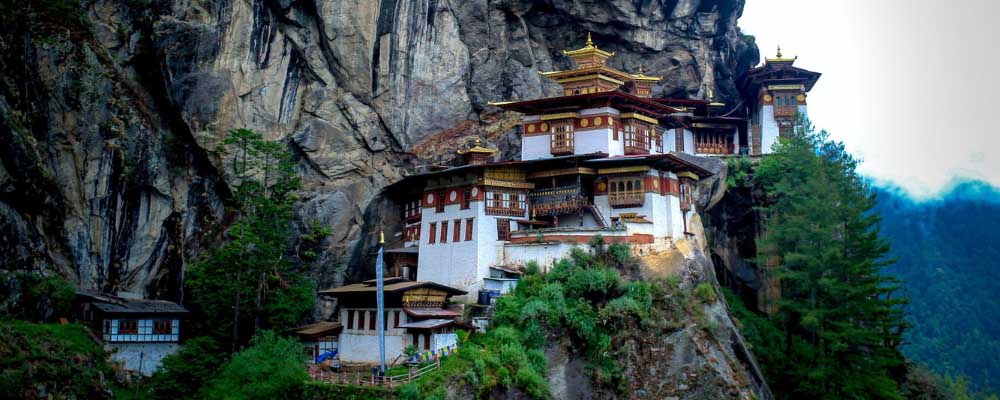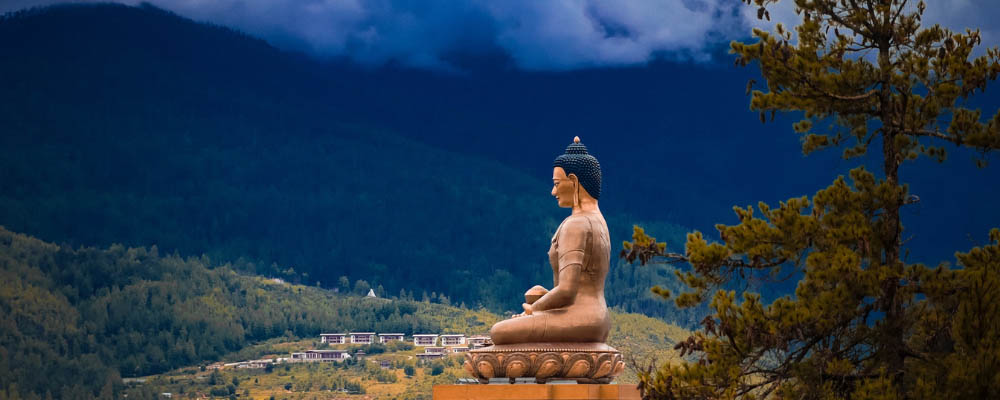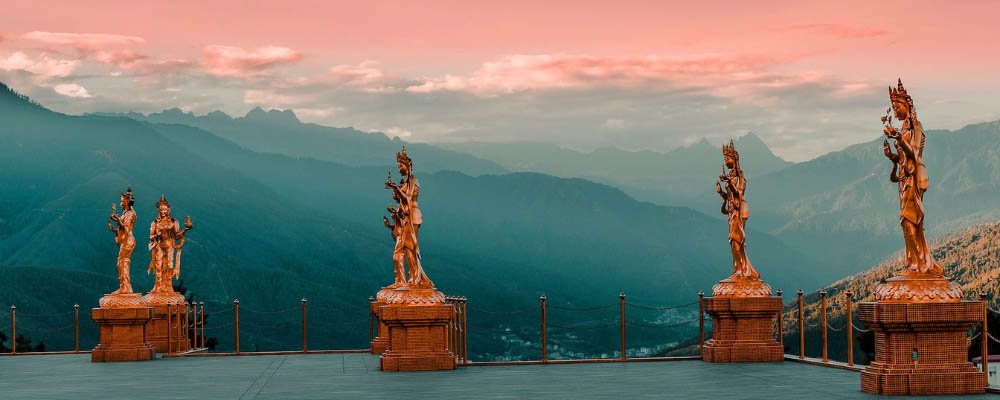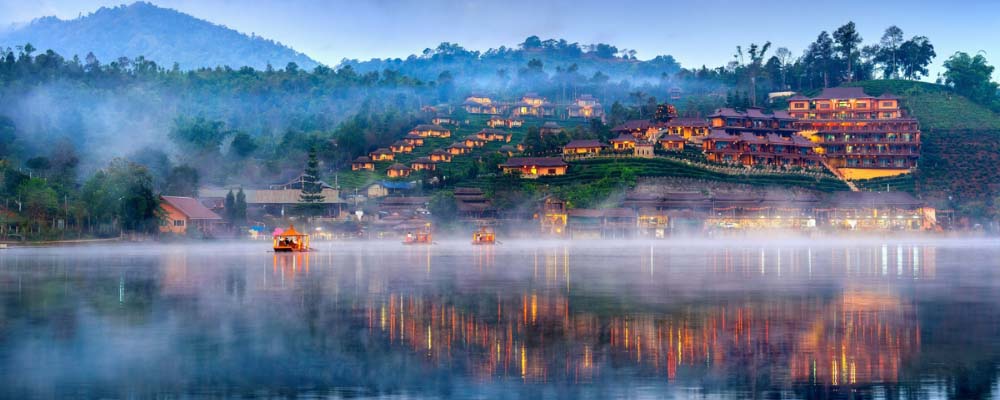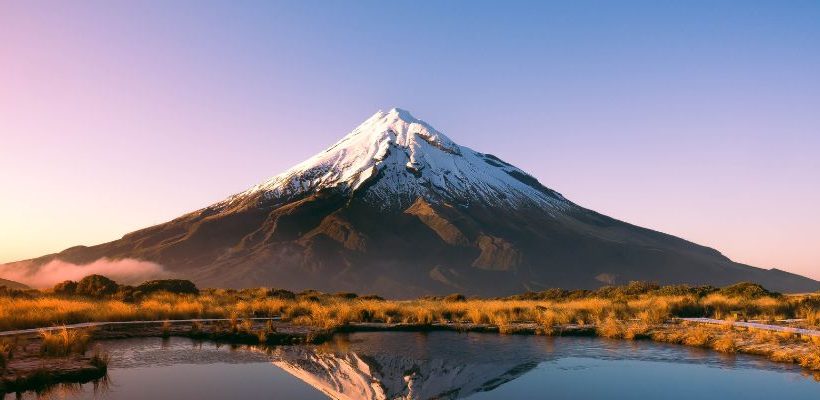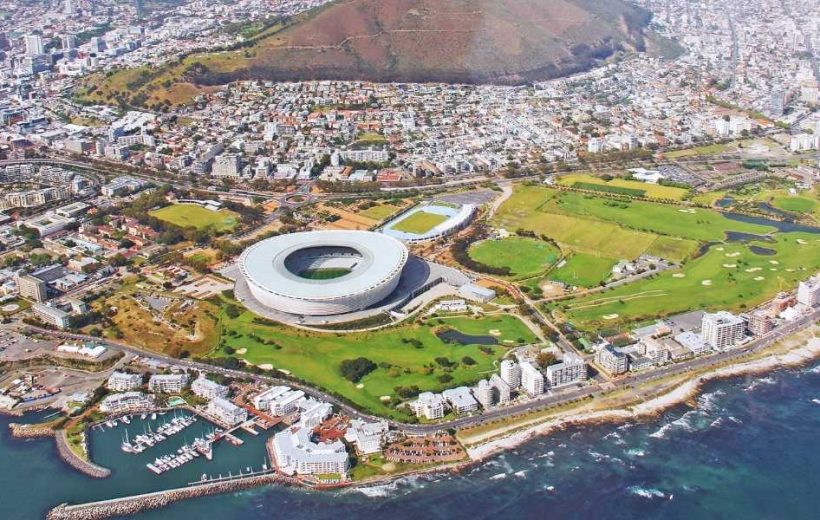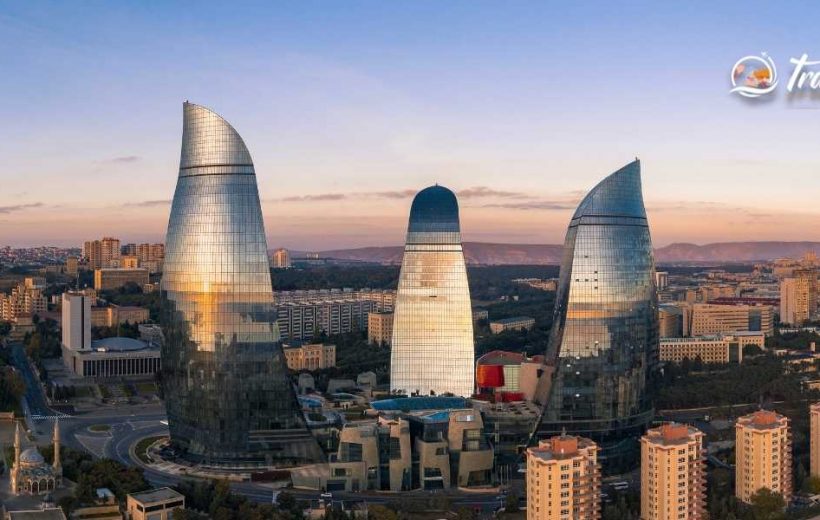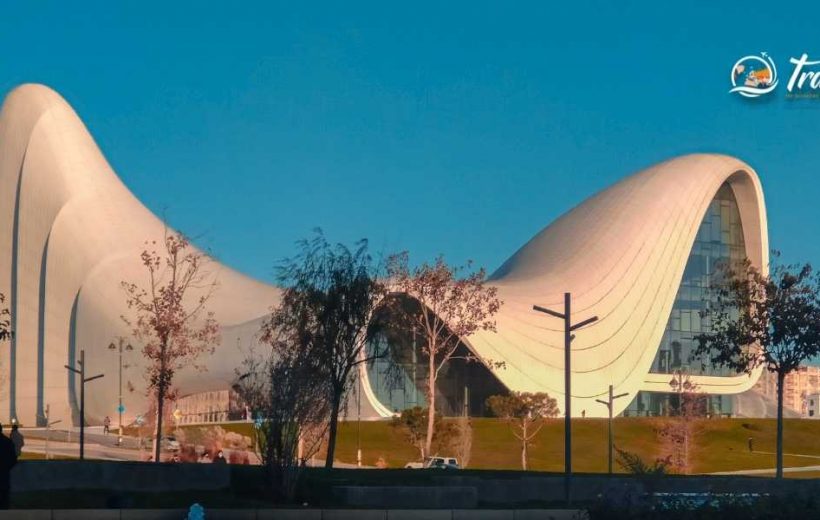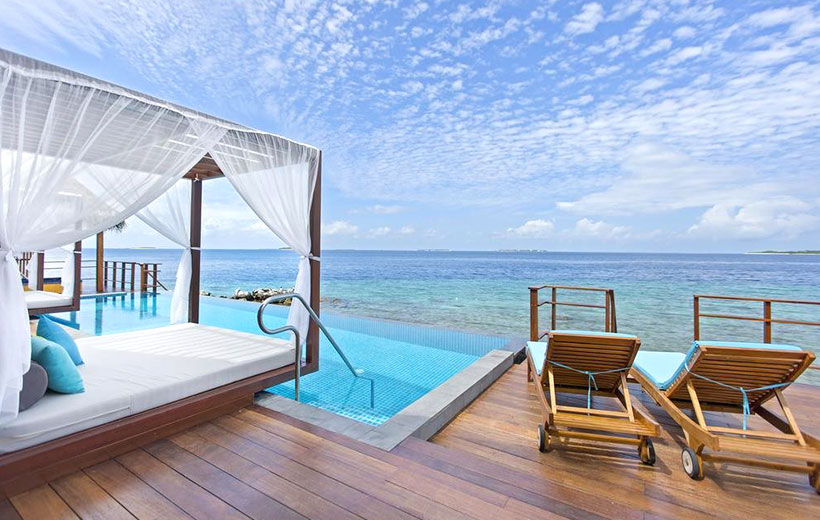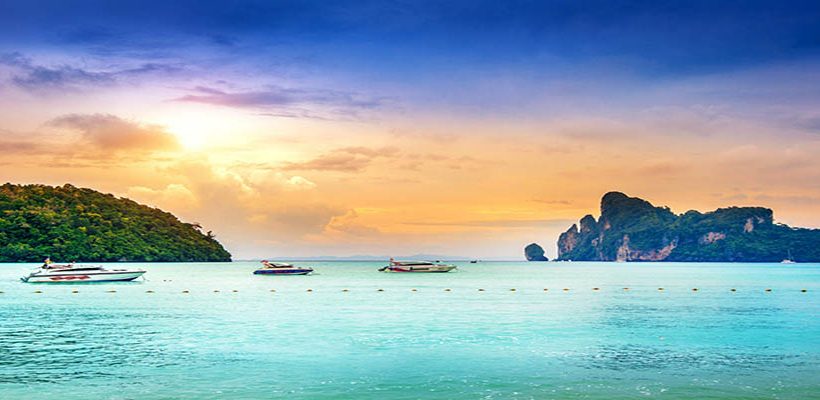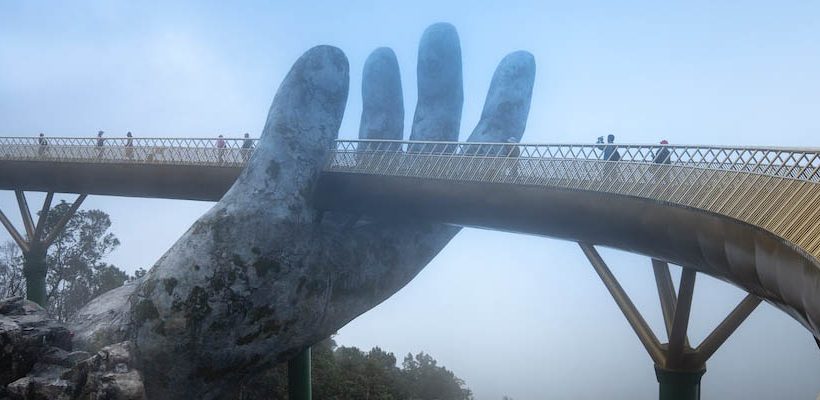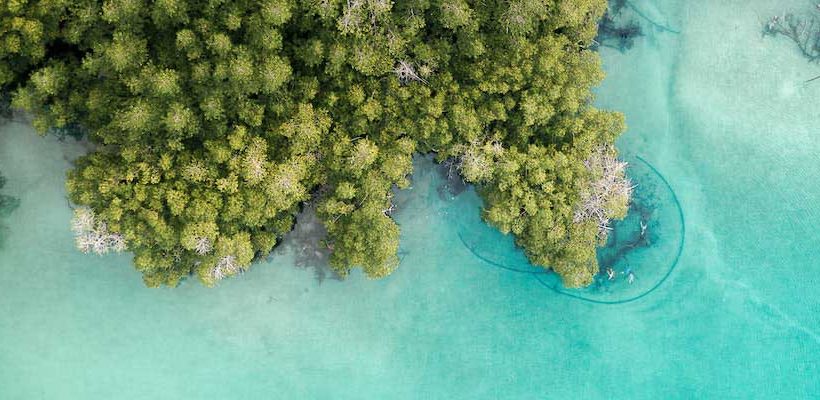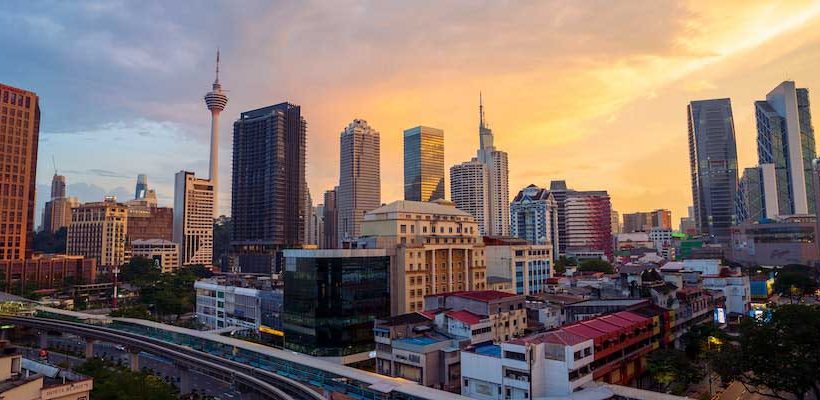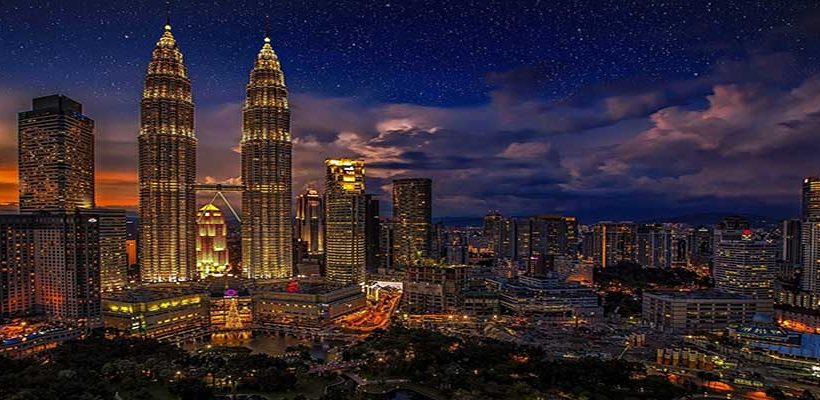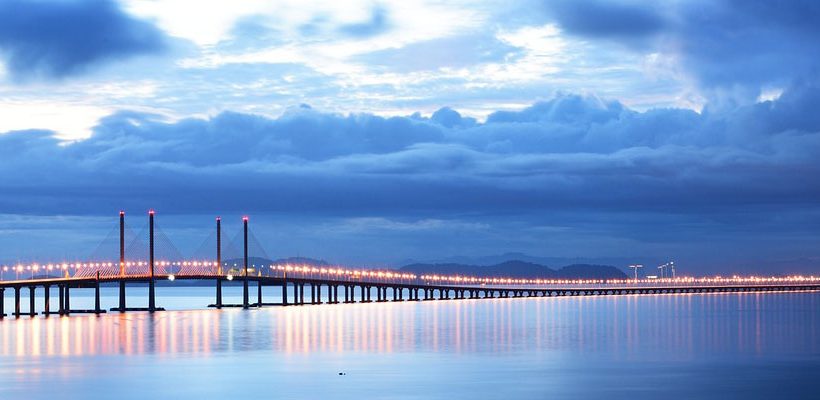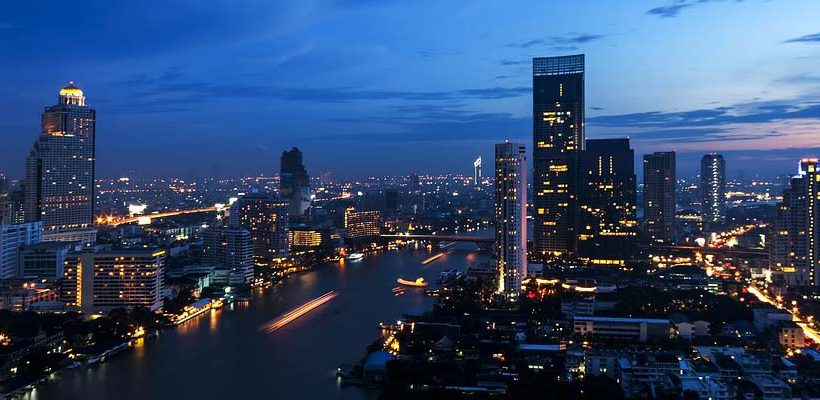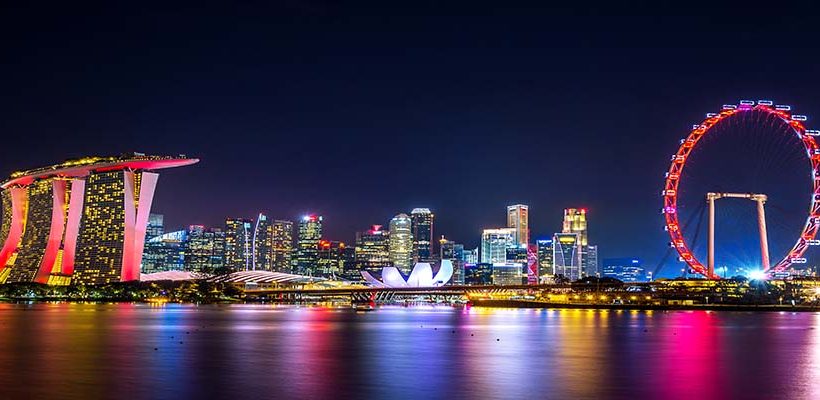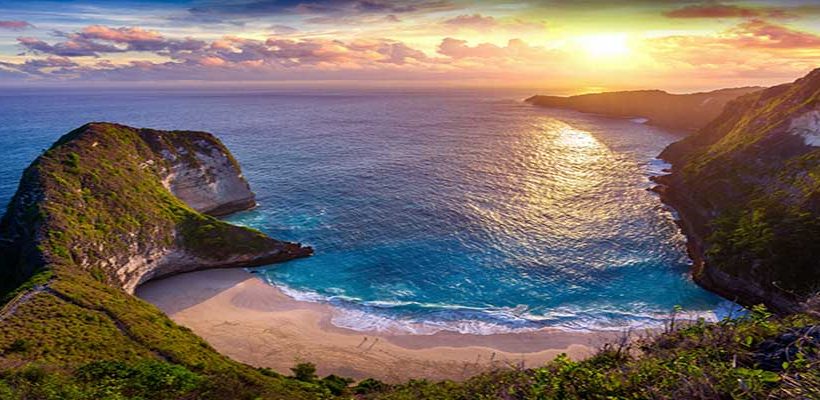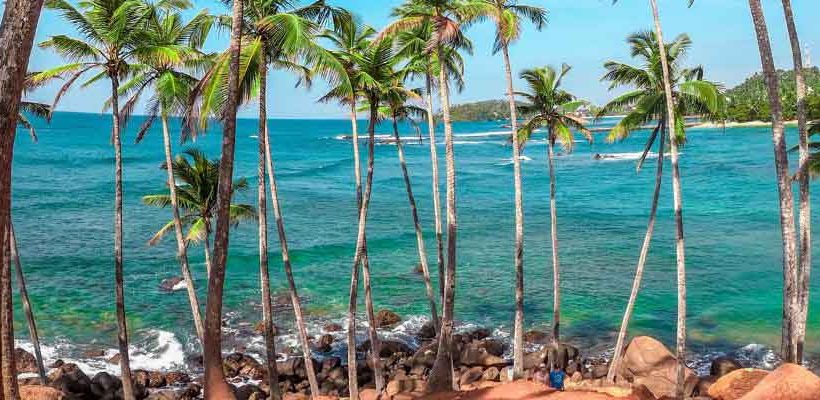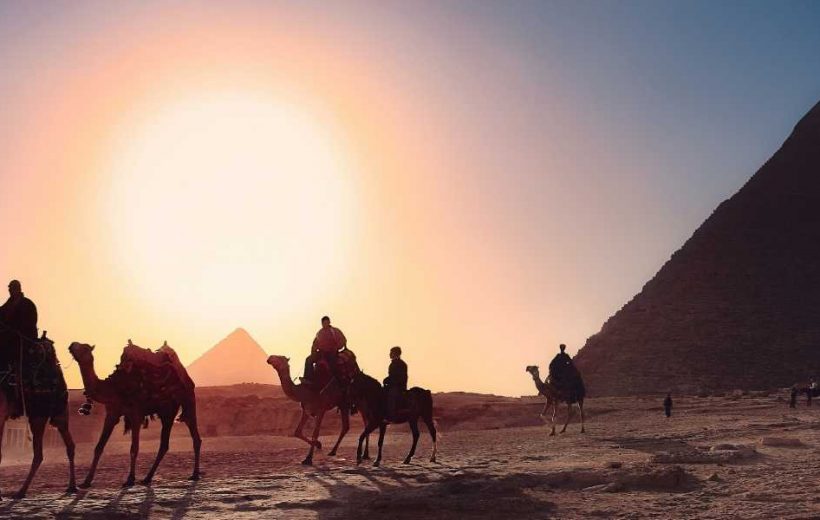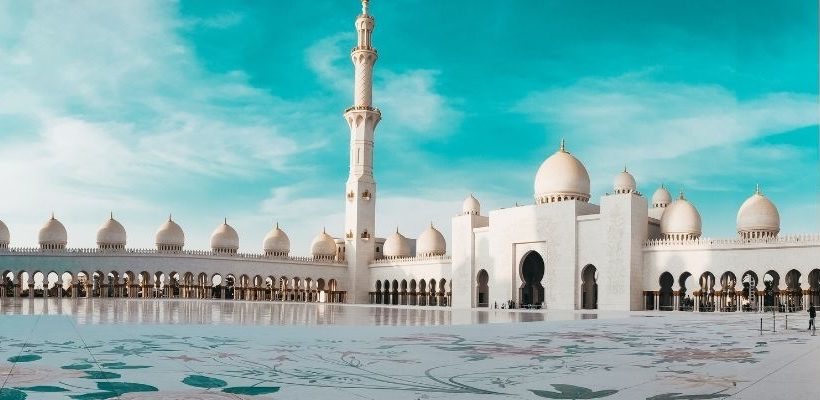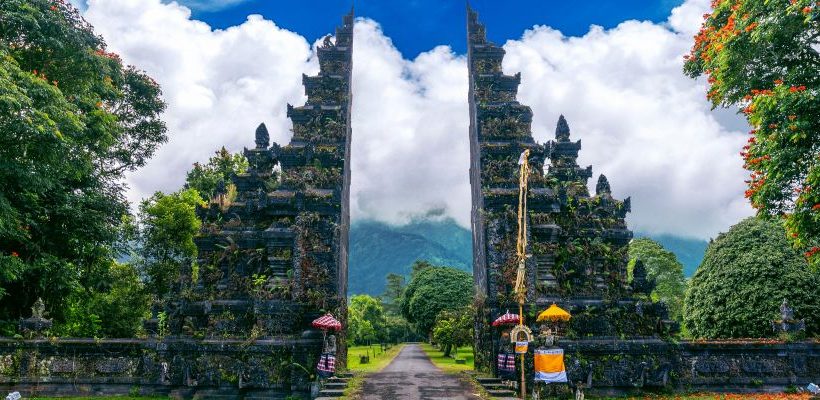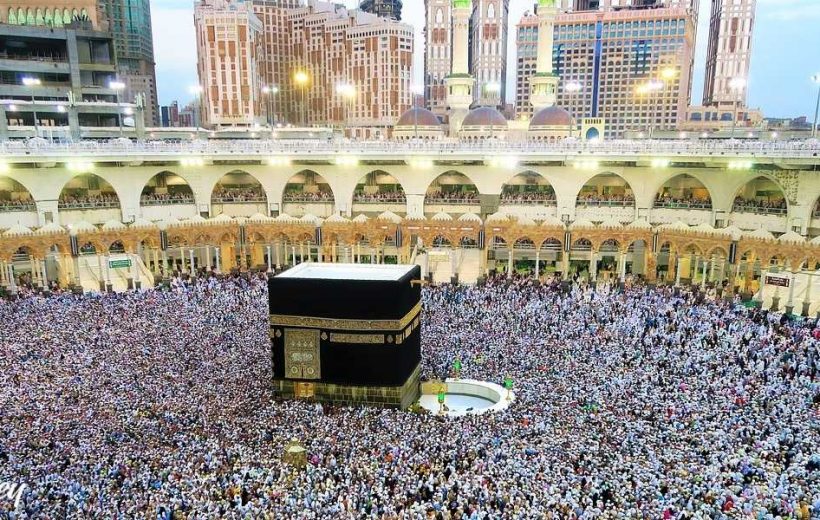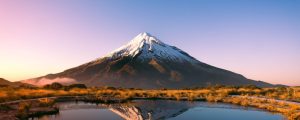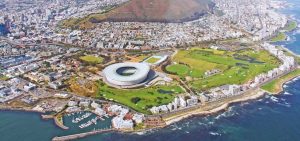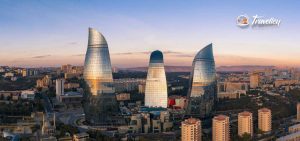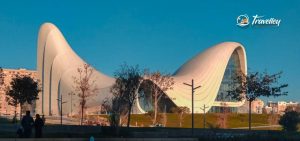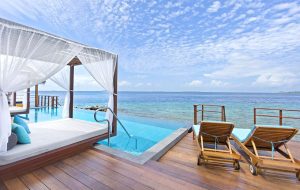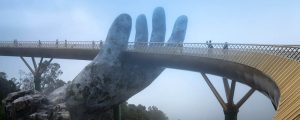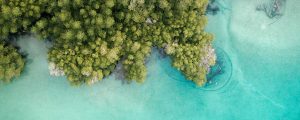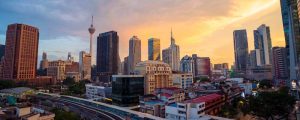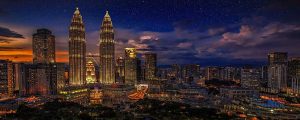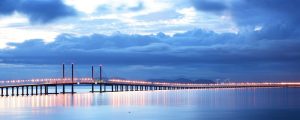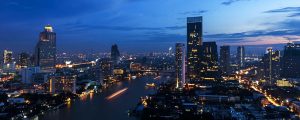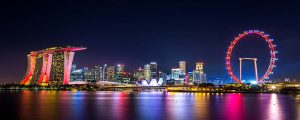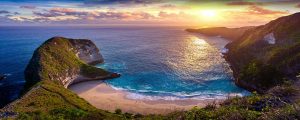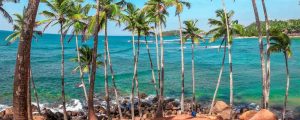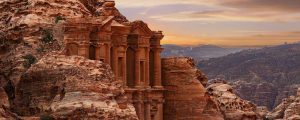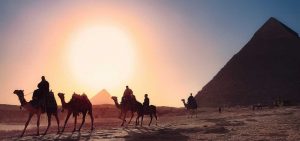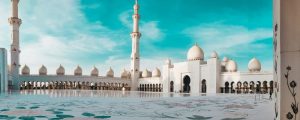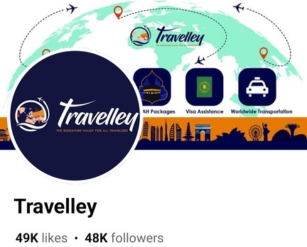Explore Amazing Bhutan in 07 Days
Explore Amazing Bhutan in 07 Days
Price
Duration
Reviews
No reviews yetExplore Amazing Bhutan in 07 Days
PHUENTSHOLING | THIMPHU | PARO | PUNAKHA
Validity: 01 Mar 2026 – 31 Oct 2026
Highlights
Embark on a 07-day journey to depths of Bhutan with Travelley’s 07 day Bhutan Tour Package. Enter Bhutan through the southern gateway of Phuentsholing and head to the capital city of Thimphu. Journey through the picturesque landscapes of Thimphu, the capital city, and visit the National Memorial Chorten, Folk Heritage Museum, and the Tashichho Dzong fortress. Explore Paro, hike up to the iconic Tiger’s Nest Monastery, and visit the historic Paro Dzong fortress. Travel to Punakha and witness the stunning Punakha Dzong, an architectural masterpiece. Immerse yourself in the rich Bhutanese culture and indulge in local cuisine. Conclude your trip with unforgettable memories of Bhutan’s natural beauty and cultural heritage.
Price Details
Based on 3-Star Hotel
| Package Details | Price Details |
| Adult on Twin Share Basis (10 – 12 Pax) in a Group | 47,800/ Per Person |
| Adult on Twin Share Basis (05 – 09 Pax) in a Group | 51,900/ Per Person |
| Adult on Twin Share Basis (03 – 04 Pax) in a Group | 55,900/ Per Person |
| Adult on Twin Share Basis (02 Pax) in a Group | 66,700/ Per Person |
Based on 4-Star Hotel
| Package Details | Price Details |
| Adult on Twin Share Basis (10 – 12 Pax) in a Group | 54,600/ Per Person |
| Adult on Twin Share Basis (05 – 09 Pax) in a Group | 57,300/ Per Person |
| Adult on Twin Share Basis (03 – 04 Pax) in a Group | 62,700/ Per Person |
| Adult on Twin Share Basis (02 Pax) in a Group | 72,100/ Per Person |
Hotel Details
Based on 3-Star Hotel
| Location | Hotel Name | Meal Plan |
| Phuentsholing | Lotus Villa or Similar | Full Board |
| Punakha | Hotel White Tara or Similar | Full Board |
| Thimpu | Peaceful Resort or Similar | Full Board |
| Paro | Hotel Ratna Vara or Similar | Full Board |
Based on 4-Star Hotel
| Location | Hotel Name | Meal Plan |
| Phuentsholing | Hotel Druk or Similar | Full Board |
| Punakha | Rkpo Green or Similar | Full Board |
| Thimphu | Terna Lince or Similar | Full Board |
| Paro | Tashi Nangay or Similar | Full Board |
Visa Requirements
- Please visit the below link for detailed information and a checklist. Bhutan Visa
Source: Bhutan Ministry of Foreign Affairs
Payment Policy
- Phase-1: 80% of the total package amount at the time of booking.
- Phase-2: 20% of total package amount before 10 working days of travel date.
Cancellation Policy
- All sales are final and incur 100% cancellation penalties and only air ticket depends on the airline’s cancellation policy.
Included
- Meet and Greet at the Paro international Airport
- 01-Night Accommodation at Phuentsholing
- 02-Nights Accommodation at Thimphu
- 01-Night Accommodation at Punakha
- 02-Night Accommodation at Paro
- English Speaking Guide
- Transfer: On SIC Basic
- Paro Airport – Phuentsholing Hotel
- Phuentsholing Hotel – Paro Hotel
- Paro Hotel – Punakha Hotel
- Punakha Hotel – Thimpu Hotel
- Thimpu Hotel – Paro Airport
- Sightseeing: On SIC Basic
- Half Day Phuentsholing tour
- Full Day Paro city tour
- Paro Taktsang Hike tour
- Full Day Punaka city tour
- Full Day Thimphu city tour
Excluded
- Personal expenses (laundry, internet, phone calls etc.
- Meals (including tips) and drinks not included in the itinerary
- All type of personal expenses like Laundry Bill, Telephone Calls, Drinks, Stilt / Digital Camera, tips and Extra Meals apart from Buffet Breakfast at your hotels
- Any Kind of Entrance Monuments Fees as per above tour program me
- Any other kind of service which are not committed as per tour program
DAY 01: DHAKA – THIMPU – PHUENTSHOLING
Arrival at Paro Airport. The one & only International Airport of Bhutan with picturesque landing. After the Meet Our assistance transfer to Phuentsholing.
Phuentsholing: is a border town in southern Bhutan and is the administrative seat of Chukha District. Phuentsholing adjoins the Indian town of Jaigoan, and cross-border trade has resulted in a thriving local economy. The India-Bhutan border at Phuentsholing clearly separates two very different peoples and cultures. Jaigoan across the border is larger, bustling and loud, similar to many other West Bengal Centre’s of commerce, albeit with many Bhutanese shoppers. Phuentsholing is uniquely more urban than other Bhutanese towns as it is the Bhutan financial, industrial and trading capital. It has been affected a little by the neighboring culture, but is distinctly far quieter and more orderly than its neighboring as the majority of goods traded go into Bhutan through Phuentsholing, the town is the gateway to Bhutan for trade with India. Overnight stay at Phuentsholing.
DAY 02: PARO – PHUENTSHOLING
In evening visit
Kyichu Lhakhang: Located close to the Paro Airport, the Kyichu Lhakhang is an important Himalayan Buddhist Temple. It is one of Bhutan’s oldest religious sites built in the seventh century. This temple is one of 108 built by Tibetan emperor Songtsen Gampo to subdue a demoness who prevented the spread of Buddhism. Temples were built across the Himalayas to pin her body down. Kyichu Lhakhang pins down her left foot and Jamba Lhakhang in Bumthang her left knee.
Guru Rinpoche visited this temple in the eight century and concealed many spiritual treasures here. Pilgrims turn the many prayer wheels along the walls as they circumambulate the temple. The fine statues of the Bodhisattvas and the Buddha are national treasures. The wooden floor of the sanctum is inlaid with turquoise and coral gemstones offered by pilgrims.
Paro Dzong: is one of the most impressive and well-known dzongs in Bhutan. One of the finest examples of Bhutanese architecture, it is also known as the Ringpung Dzong, which means ‘fortress on a heap of jewels. It is the administrative seat of the district of Paro. The dzong was built in the 16th century on the foundation of a monastery built by Guru Rinpoche. It was used on numerous occasions to defend the Paro Valley from invasions by Tibet. Unlike most of the other dzongs in Bhutan, it survived the massive 1897 earthquake mostly unscathed, though it was almost burnt to the ground by a fire in 1907. All-important relics were lost to the fire and nothing could be salvaged except for the Thongdrol, a 20×20 meter-wide Thangka. The Thangka is displayed annually during a ceremony called Paro Tshechu. The Dzong was however rebuilt the following year.
The National Museum of Bhutan: is housed inside the revamped circular Ta-dzong building, an ancient watchtower above the Paro Dzong. This unusual round building is said to be in the shape of a conch shell. The original building was constructed in 1656 but the building was converted into a museum in 1968. The necessary infrastructure was created to house some of the finest specimens of Bhutanese art, including masterpieces of bronze statues and paintings gathered from different parts of the country. Suitable galleries were constructed to house the extensive collections. Works of art were elegantly displayed on scientific lines. Some of the handicraft’s items cover the history and cultural heritage of more than 1500 years. The National Museum has in its possession over 3,000 works of Bhutanese art, rich holdings of various creative traditions and disciplines that represent a remarkable blend of the past with the present and is a major attraction for local and foreign visitors. Overnight stay at Paro.
DAY 03: PARO TAKTSANG HIKE
After Breakfast, enjoy a hike to Taktshang Lhakhang (Tiger’s Nest)- It is one of the most famous of Bhutan’s monasteries, embark on a long hike to one of Bhutan’s most revered icons, Taktsang (“Tiger’s Nest”) Monastery: That clings to a cliff 3,000 feet above the valley floor. You hike on a wide trail and the round-trip journey covers a little over 4 miles and reaches heights of 9,184 feet above sea level. (You may choose to hike all the way to the monastery or stop after two hours at a cafeteria and make your way back.) Spend the day among the monks at this sacred pilgrimage site, where the great tantric mystic Guru Rinpoche (also known as Padmasambhava) is believed to have flown on the back of the tiger to bring the teachings of the Buddhist Dharma to Bhutan. In the evening, get first-hand experience in archery, Bhutan’s national sport and national obsession. Stay overnight at Paro hotel.
DAY 04: PUNAKHA – PARO
After early breakfast at the hotel, drive to Punakha which takes approx. 03-hour drive. Enroot visit
Dochula pass: located 30 km away from the capital offers a 360-degree of beautiful panoramic view of Himalaya Mountain range, especially on clear winter days. The 108 chortens that adorn the beauty of this place were built by Queen Mother to commemorate the Bhutanese soldiers who were killed when fighting the Indian rebels in 2003.
Later take a short hike to
Chimi Lhakhang: located near Lobesa, Punakha stands on a round hillock and is flanked by hundreds of prayer flags. Built in 1499, this monastery is dedicated to Lama Drukpa Kinley or ‘the Divine Madman’. An accomplished master of Mahamudra Buddhist Tradition, he is also known as the ‘Mad Saint’ for his unorthodox ways of teaching Buddhism by singing, humor and outrageous behavior, which amounted to being bizarre and strong sexual overtones and inclinations. Also, visit the
Punakha Dzong: Also known as Pungtang Dechen Phodrang Dzong (meaning ‘the palace of great happiness or bliss’) is the administrative center of Punakha dzongkhag in Punakha, Bhutan. Constructed by Zhabdrung Ngawang Namgyal on the 8th day and 8th month of the Fire ox year in 1673, it is the second oldest and second largest Dzong in Bhutan and one of its most majestic structures. Punakha Dzong was the administrative center and the seat of the Government of Bhutan until 1955, when the capital was moved to Thimphu. Stay overnight at Punakha hotel.
DAY 05: PUNAKHA – THIMPU
After breakfast at hotel drive to Paro which takes approximately 03-hour drive. Visit the
National Museum of Bhutan: housed inside the revamped circular Ta-Dzong building, an ancient watchtower above the Paro Dzong. This unusual round building is said to be in the shape of a conch shell. The original building was constructed in 1656 but the building was converted into a museum in 1968. The necessary infrastructure was created to house some of the finest specimens of Bhutanese art, including masterpieces of bronze statues and paintings gathered from different parts of the country. Suitable galleries were constructed to house the extensive collections. Works of art were elegantly displayed on scientific lines. Some of the handicraft’s items cover the history and cultural heritage of more than 1500 years. Also visit
Paro Dzong: Is one of the most impressive and well-known dzongs in Bhutan. One of the finest examples of Bhutanese architecture, it is also known as the Ringpung Dzong, which means ‘fortress on a heap of jewels. It is the administrative seat of the district of Paro. The Dzong was built in the 16th century on the foundation of a monastery built by Guru Rinpoche. It was used on numerous occasions to defend the Paro Valley from invasions by Tibet. Visit the
Kyichu Lhakhang: An important Himalayan Buddhist Temple. It is one of Bhutan’s oldest religious sites built in the seventh century. This temple is one of 108 built by Tibetan emperor Songtsen Gampo to subdue a demoness who prevented the spread of Buddhism. Temples were built across the Himalayas to pin her body down. Kyichu Lhakhang pins down her left foot and Jamba Lhakhang in Bumthang her left knee. Stay overnight at Paro hotel.
DAY 06: PUNAKHA – THIMPU
After breakfast at hotel, start your sightseeing program by visiting the visit National Library of Bhutan, Folk Heritage Museum, and National Institute of traditional medicines, Takin Sanctuary and Painting school.
The Buddha Dordenma: Is located atop a hill in Kuensel Phodrang Nature Park and overlooks the Southern entrance to Thimphu Valley. The statue fulfils an ancient prophecy dating back to the 8th century A.D that was discovered by Terton Pema Lingpa (Religious Treasure Discoverer) and is said to emanate an aura of peace and happiness to the entire world.
This massive statue of Shakyamuni measures in at a height of 51.5 m, making it one of the largest statues of Buddha in the world. The statue is made of bronze and is gilded in gold. 125,000 smaller Buddha statues have been placed within the Buddha Dordenma statue; 100,000 statues of which are 8-inches-tall and 25,000 statues of which are 12 inches tall. Each of these thousands of Buddhas have also been cast in bronze and gilded. The throne that the Buddha Dordenma sits upon is a large meditation hall.
Takin Sanctuary: located in the Motithang, at Thimphu, a wildlife reserve area for Takin, the National Animal of Bhutan. It is said that Drukpa Kunley or Devine Madman, a popular 15th century saint is said to have created it with his magical power at a large congregation of devotees. It resembles a cow from back, a goat from the front, and it continues to befuddle taxonomists, who cannot quite relate to another animal.
Painting School: where traditional art is still kept alive through instructions in the art of painting Thangkas (sacred Buddhist religious scrolls). Visit the Traditional Medicine Institute where medicines are prepared according to ancient practices, and then on to observe a Bhutanese paper factory at work. This is generally an “outside-only” visit.
The Folk heritage museum: A three storied traditional building houses the Folk Heritage Museum. The earthen and timber building was renovated and restored few years ago to appear as it was century ago. Established in 2001 in Thimphu, the museum provides glimpse into the traditional Bhutanese material culture and way of life. The artifacts, which are kept inside the house, remind the visitors about how the rural Bhutanese live today. This 19th century traditional house provides you a glimpse of the Bhutanese lifestyle, and artifacts from the rural households. One can come across typical household objects, tools and equipment. Overnight stay at Thimphu.
DAY 07: PARO – DHAKA
Breakfast at hotel. After breakfast transfer to Airport for departure.
Remarks
- Tour package Confirmation always depends subject to availability at the time of booking.
- All transfers and sightseeing in Bhutan will be provided in 1 NAC Vehicle (Tucson/Santafe/Innova/Ertiga/Similar) as per the itinerary and not at the disposal
- All transfers from Bagdogra/Hasimara to Phuentshilong and back will be provided in 1 NAC (Innova) as per the itinerary and not on disposal.
- Child prices only apply if there are 2 adults. In the case of 1 adult and 1 child, you will need to book for 2 adults.
- Not wheelchair accessible.
- The guide is not included all the time (Guide will be available during tour times)
- Given rates are not valid during Bhutan festive seasons

